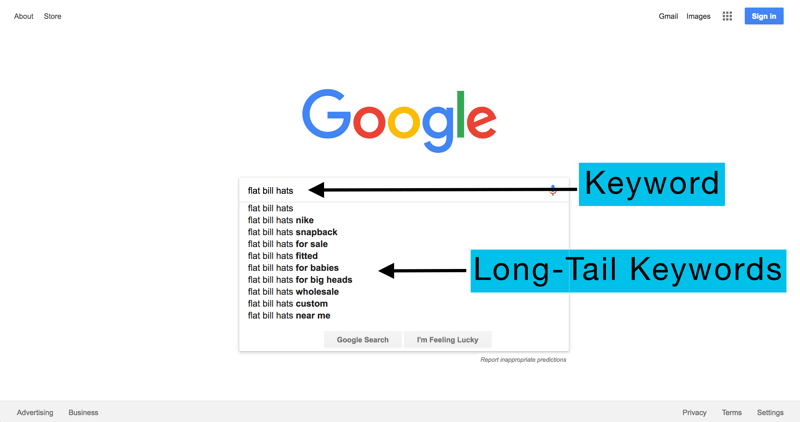TABLE OF CONTENTS
SEO Definition | Why Is SEO Important? | Best Practices
If you’ve heard it once, you’ve probably heard it 1,000 times: Search engine optimization (SEO) is “make or break” for any website. It’s an essential tool necessary for any business seeking to build an online presence.
What many people — business owners and marketers alike — are sometimes fuzzy about, is how to optimize their website to get more search engine love.
The most important thing for businesses new to SEO to remember is that it’s a marathon, not a sprint.
You’re not likely to rank in the top spots, or even on the first page, within a single day, week, or even month. It’s a process that takes time to experience real results. So be patient and know that the ROI is worth the wait.
What Is Search Engine Optimization?
Here's our definition of SEO in under 40 words:
Search engine optimization is a set of strategies and practices aimed at improving a website's visibility and ranking on search engine results pages (SERPs) and, in turn, increasing organic (non-paid) website traffic.
Search engines, like Google, use complex algorithms to determine the relevance and quality of websites when a user performs a search. SEO involves optimizing various elements of a website, both on-page and off-page, to align with these algorithms and improve the website's chances of appearing higher in search results.
Effective SEO practices require keeping up with search engine algorithm updates, conducting keyword research, analyzing website performance, monitoring competitors, and making continuous improvements to enhance search rankings.
No matter your business or industry, from financial services to construction, SEO is a universal tool to help increase your exposure online, attract targeted organic traffic, and generate more leads.
Why Is SEO So Important for Businesses?
According to the Census Bureau of the Department of Commerce, U.S. retail e-commerce sales for the first quarter of 2024 were estimated at $289.2 billion. This is a 2.1% increase from the fourth quarter of 2023.
What this means for businesses is that ranking on search engines is more important than ever. If no one knows what you have to offer, it's going to be very difficult to get your sliver of that enormous pie.
Beyond overall revenue, here are some additional reasons search engine optimization is so important for your business:
- Effective SEO increases the amount of traffic to your website, which may also help boost the number of leads.
- Ranking well in search engines creates an implied trust among consumers. Think of it like this: If the search engines trust you, then you must be a safe company to do business with.
- SEO helps to build your brand more effectively. Ranking well in search engines means your brand is gaining more exposure to consumers, thus improving brand awareness.
- It keeps customer acquisition costs low. SEO traffic, once you rank well for your desired target keywords, is free. SEO offers a steady stream of warm, if not red hot, prospects and delivers them straight to your website.
- It provides you with the tools you need to measure your success. Very few advertising and marketing strategies can match SEO for delivering up-to-the-minute statistics on their effectiveness and ROI. You’ll be able to see which keywords deliver the best results and where your strategy requires some adjustments.
- SEO offers opportunities for you to target local audiences for increased engagement, traffic, sales, and customer experiences.
But the biggest reason SEO is so critical for all businesses, no matter the shape, size, or industry, is that your competitors will be using SEO as well. If you want to remain competitive, you have to invest in a winning search engine optimization strategy.
Website SEO and Content Marketing Best Practices
The process of search engine optimization is far more complex than what a simple definition implies. There are a lot of moving parts that go into optimizing websites so they will rank well in search results. Plus, each major U.S. search engine — Google, Bing, etc. — has its own unique algorithms to consider.
Put the Reader First
It’s easy to get caught up in the process of appealing to search engine algorithms. But if your focus is solely on getting on that front page, and not providing a better user experience, you’ll find that your overall ranking suffers as a result.
Design your pages for real people who will be reading your information and, ideally, purchasing your products. You can do this by prioritizing E-E-A-T, which stands for Experience, Expertise, Authority, and Trustworthiness. Understanding and implementing E-E-A-T principles can significantly impact your website’s search engine rankings and overall credibility.
MARKETING PRO TIP
Prioritizing E-E-A-T in your content strategy is essential for standing out in a competitive digital landscape and building a loyal, trusting audience.
Additionally, work on building relationships with your audience. Search engines love engaged audiences and reward websites that build this type of response with higher rankings.
Research Keywords Carefully
Keyword research is perhaps your biggest priority for SEO. You’re looking for keywords that relate to your business and that your prospects would use when searching for businesses like yours.
Some of our favorite online keyword research tools are:
- Semrush Keyword Magic Tool
- Google Ads Keyword Planner
- Mangools KWFinder
- Moz Keyword Explorer
- UberSuggest
The best keywords for your website should have a high monthly search volume (lots of people are searching for them) and low search difficulty (which means fewer businesses are competing to rank for that keyword by using it in pay-per-click ads).
Compile your list of at least 10 keywords after finding the best mix of volume and difficulty. Also, try out different variations on your optimal keywords, and take note of trends in how people are searching. Are they asking questions in longer phrases or changing the order of words? Capitalize on those variations.
Provide Exceptional Content
Once you’ve done your keyword homework, it’s time to put those keywords to work. Comb through your existing website pages and blogs and incorporate your keywords in the content — naturally. Use them in headlines, subheadlines, and body copy.
When it comes to new content, take your list of optimal keywords and start building blog articles and other pages around those phrases.
Let’s say we're creating content for a hat company. We learned through research that the keyword "flat bill hats" has a high monthly search volume and low competition. We should create content based on long-tail keywords to create more SEO-rich blogs. Long-tail keywords are longer phrases that people are more likely to type into Google.
Here’s an example below. Google’s autofill feature is an indicator of how people are using "flat bill hats" as a keyword. Not everything will be a fit for your business, but considering long-tail keywords will open your content up to more people.

Remember that a successful content marketing strategy includes more than just written content. Use keywords to plan and create other forms of content like audio, video, and infographics. By including the right content on your site that is informative, reliable, and unique, you can get the search engine love you desire.
Match Search Intent
Users approach each search query with a specific goal in mind, and search engines can recognize this — meaning you must tailor your content to match the intent of your target audience.
Search intent (also called “user intent”) can be categorized into four key pillars:
- Informational (example: “SEO best practices”)
- Navigational (example: “Facebook login”)
- Commercial (example: “Best wireless headphones”)
- Transactional (example: “Buy shoes online”)
These categories improve user experience by allowing search engines to intuitively filter out irrelevant content, ensuring that users searching for results like “how to make pasta from scratch” aren’t bombarded by noninformative product pages.
On the opposite end, users searching for “buy pasta made from scratch” will be greeted with viable eCommerce sites rather than instructional blogs and articles. Successfully satisfying search intent is Google’s number one priority when showing results, so matching your content accordingly is key.
Create Mobile-Friendly Websites
Between 40% and 60% of all website traffic is logged on mobile devices, so make sure your website adjusts to all the different sizes.
Google knows people search on devices other than desktops and favors websites that are mobile-friendly. If your site was designed in the last two years, a "responsive" framework was most likely used. But still, test it. You can use Google's Mobile-Friendly Test tool to see how well your website accommodates smaller screens.
Optimize Locally
This is especially necessary for people who have brick-and-mortar businesses and storefronts. Many people want to work with local businesses. Give them the opportunity to do so and make sure they can find you on the web through local SEO.
Think About Links
Consider asking other reputable websites to link to your website from their site. Google views links to your website as stamps of approval.
That said, avoid “black hat” practices that seek out low-quality backlinks or bulk backlinks that could land you in hot water with the major search engines. Deceptive information and practices will not be rewarded with high rankings.
Instead, add internal links to your content to keep people on your domain. What do you want the reader to do after they’ve finished reading? The plan should be to keep them on your website by providing links to other relevant content.
Remember SEO Value You Can’t See
SEO value extends beyond what the viewer sees on the page. Your site's images should have their alt text filled out. Alt text (alternate text) describes the picture in case the image doesn’t load, and it gives the image SEO value. Keep in mind that Google can’t read pictures.
Speaking of Google, have you ever noticed that green website link that appears in a Google search? That’s a custom URL. It clearly tells the searcher what’s on the page, and it’s a chance to use your keywords.
The black text underneath is the meta description of your page. Again, it's another chance to tell people what’s on the other side of the click and is a prime spot to place keywords.

Make Your Website Work With Google
Engaging in effective on-page SEO is a long-term process that must continue well after you’ve risen to the top. But the rewards of ranking well on search engines are well worth the time and attention required to get there.
If your time and resources are limited, consider working with a digital marketing agency partner that specializes in search engine optimization to help you achieve your goals and avoid potential pitfalls.
Keep in mind, however, that SEO is just one of the puzzle pieces to make your website successful in generating leads and boosting sales. For even more website success, check out our free guide to learn the 25 must-haves to implement on your site.



